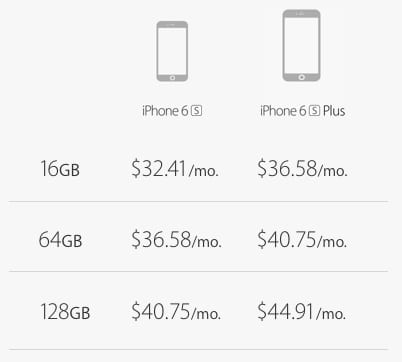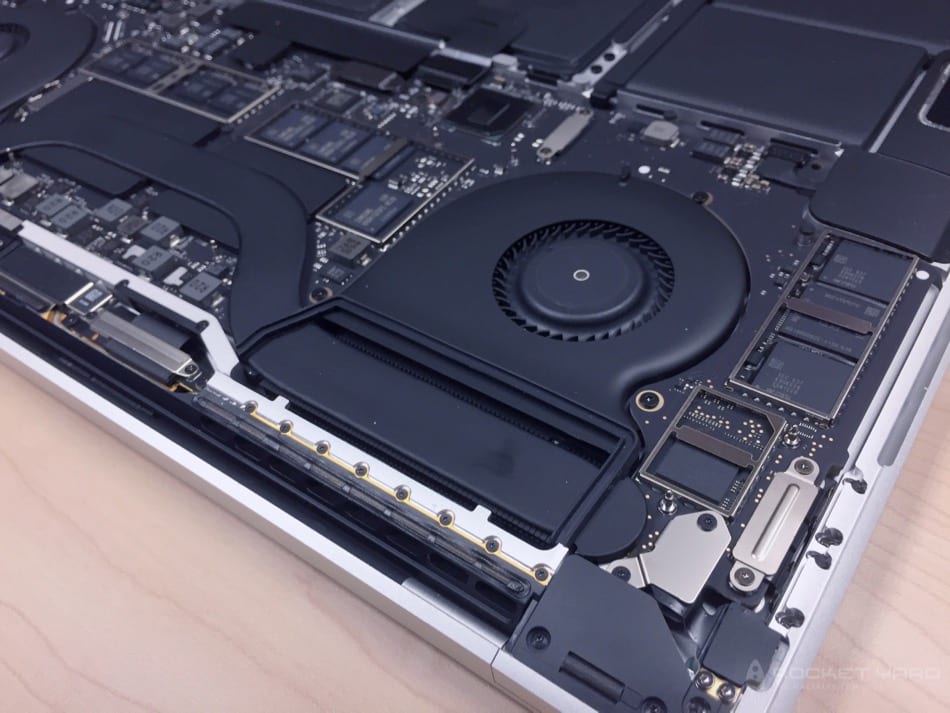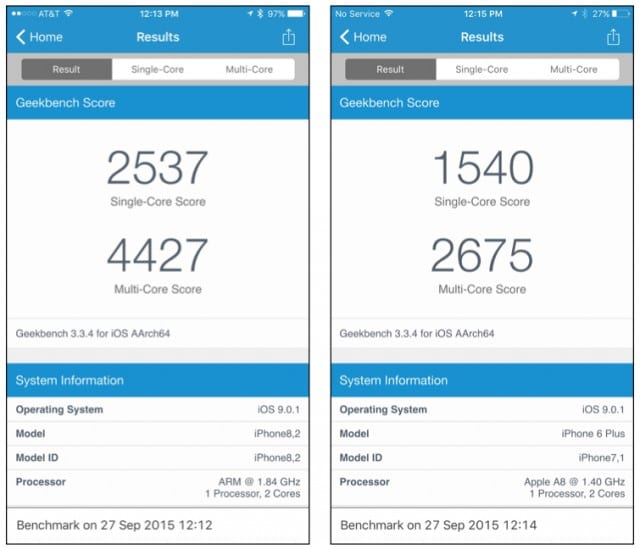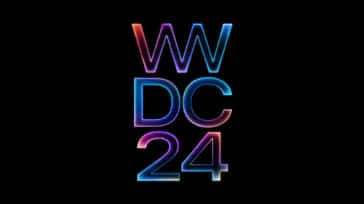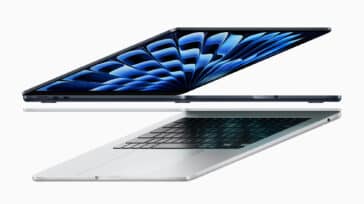Last week, The Rocket Yard took a deeper dive into the features and capabilities of the iPad Pro. Today our attention focuses on the iPhone 6s and iPhone 6s Plus, the latest in Apple’s flagship smartphone line. While some Apple fans may wait until next year to update to the expected iPhone 7, the new hardware that makes up the iPhone 6s enhances the functionality of the device so much that it’s definitely worth looking into.
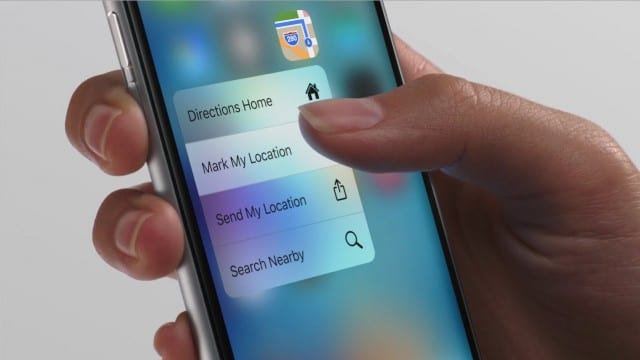
3D Touch
For the first time on a smartphone, gestures will go beyond just swiping and tapping with a new feature named 3D Touch. Integrated into the display of the iPhone 6s are sensors that not only determine that it is being touched by fingers, but how hard those fingers are pressing on the screen.
Add to that a Taptic Engine providing the same type of haptic “feel” feedback that makes the Apple Watch unique, and you have 3D Touch.
3D Touch adds to the existing gesture vocabulary of the iPhone 6s — Swipe, Tap and Pinch — with Peek and Pop. Peek is a light press on content that displays a preview of the content without opening it fully. If the preview is enough for you (like finding that an email you thought was from an old friend is actually spam), let up on the press and you’re back to your app. It’s like pressing the space bar in OS X to Quick Look at a file. Pop takes the preview provided by peek a little bit further — with a bit more pressure, the content is actually opened for you.
Related: Get ultimate protection for your iPhone 6s or 6s Plus with NuGuard KX
Apple has built Peek and Pop into Mail, Photos, Safari, and Maps. Peek into a URL that someone has sent to you, and if the preview is enticing, press harder to Pop into Safari to view it. Press on the thumbnail on the Camera screen to see all of the images you have taken recently, slide over to one you want to look at in more details, and then press harder to open it for sharing. Peek at an address in an email or on a web page, then Pop into Maps to get directions. It will be fun to see what third-party developers do with these gestures.
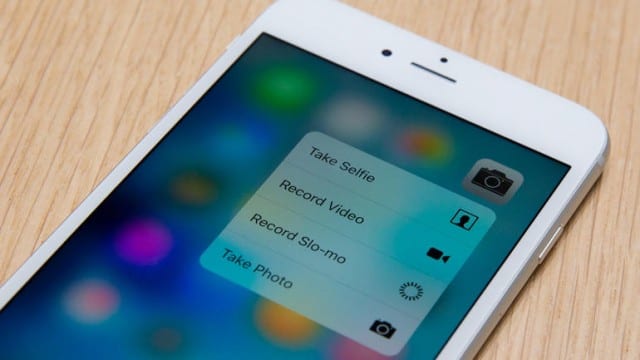
Quick Actions are another feature provided by 3D Touch and iOS 9. With Quick Actions, a press on an app icon on the Home screen provides a context menu displaying shortcuts. Examples of Quick Actions include pressing the Phone icon to see a list of favorite contacts or to create a new contact. Press the Camera icon, and the shortcuts include taking a photo, a selfie, recording video or recording slo-mo. Press on Maps, and the context menu shows four items: directions home, mark my location, send my location, and search nearby.
It may take a little while for iPhone users to get accustomed to 3D Touch, but it provides such an intuitive addition to the existing gesture set that I think it will become a feature of most new Apple products.
Under the Hood
Each iteration of the iPhone has become more powerful than the next, and the iPhone 6s is no exception. The A9 chip is the third generation of Apple’s 64-bit architecture system-on-a-chip, and the company’s CPU performance benchmarks show it as 70% faster than the A8 in the iPhone 6, while GPU graphics-intensive processes are 90% faster.
The A9 has a built-in M9 motion coprocessor that constantly tracks a number of sensors: accelerometer, compass, gyroscope, and barometer. This means that apps that only track steps, distance and elevation change can now be re-written to include running or walking pace. Having the M9 ticking away constantly also adds the ability to use “Hey Siri” to ask questions hands-free at any time. All previous iPhones will still need to be plugged in to use Hey Siri.
Touch ID has been upgraded to a second-generation sensor that provides even faster detection of fingerprints than before.
The wireless capabilities of the iPhone 6s are also impressively better than before. For those who are on LTE cellular networks that support LTE Advanced, the iPhone 6s will support up to 300 Mbps connections — that’s faster than my cable service, Comcast… Apple also provides support now for 23 LTE bands, meaning that the iPhone 6s can roam in even more countries around the world than previous models. Even Wi-Fi speed has been doubled, with up to 866 Mbps connections.
Some wireless carriers are now supporting Voice over LTE, essentially sending phone calls over LTE data connections rather than traditional voice channels. The iPhone 6s, naturally, supports both Voice over LTE and Wi-Fi calling, so customers of select wireless carriers are soon going to be making the clearest-sounding phone calls they’ve ever made.
Cameras: Higher resolution, live photos, Retina flash
According to Flickr and other photography sharing sites, iPhones are the most popular cameras in the world. The camera technology built into the iPhone 6s takes its capabilities to a whole new level that iPhone photographers are going to love.
To start off, the iSight (rear) camera now captures 12 megapixels per photo, up from a mere 8-megapixel count with the camera on the iPhone 6. That means that the camera now captures 50% more pixels than the iPhone 6 camera did. The optical image stabilization that was built into the iPhone 6 Plus now supplies stabilization for videos as well as photography on the iPhone 6s Plus.
As Apple says, “great photos aren’t just measured in megapixels”. The camera sensor is all new, as is the image signal processor. By reengineering the sensor, Apple figured out a way to provide the camera with truer color and less noise. The company has improved the autofocus with much faster response, so it should be even easier to get just the just the photo you want.
Panoramas on the iPhone are amazing and fun to shoot. On the iPhone 6 cameras, those panoramas could be up to 43 megapixels in size. Now shooting a panorama can eat up to 63 megapixels of storage on your iPhone 6s.

Apple didn’t stop with just still photography. There are new “Live Photos”, which include 1.5 seconds before and after each photo, allowing you to see — and hear — photos that seem to come to life. Live Photos can be set as Lock screen wallpaper, so those special moments in your life can be enjoyed every time you pick up your iPhone 6s. Apple is updating all of its devices to make them able to view Live Photos.
Now here’s something that is going to revolutionize television more than the new Apple TV: 4K video from the iSight camera. 4K video is shot at 3840 x 2160 pixels, a resolution that’s exactly four times that of standard 1920 x 1080 pixel high-definition video. If there’s anything that’s going to sell a lot of 4K ultra-high-definition TVs (UHDTVs), it’s having access to a 4K video camera in your pocket.
iMovie for iOS has redesigned to allow editing of 4K video, including the ability to create split-screen and picture-in-picture 4K videos on the iPhone 6s and iPhone 6s Plus.
Apple didn’t ignore the FaceTime HD camera, either. It’s now up to the task of shooting 5-megapixel selfies, up from paltry 1.2-megapixel images with the iPhone 6 and iPhone 6 Plus. For the first time, the FaceTime HD camera has a flash — a Retina Flash to be exact. The new iPhones use the entire display as a flash.
Apple’s True Tone flash technology has been available on the iSight cameras for a while; now it’s used with the FaceTime HD camera and Retina Flash. Taking a photo with the FaceTime HD camera, the flash sends out a “preflash” that helps the camera determine what the ambient light is like. True Tone flash then matches the ambient light for a very lifelike image. A custom display chip allowed Apple to pulse the iPhone 6s and iPhone 6s Plus displays to three times brighter than usual for a really intense flash when needed.

No More Bendgate: The Physical Attributes
Last year when the larger 4.7-inch iPhone 6 and 5.5-inch iPhone 6 Plus arrived on the scene, some immediately decided to try discrediting Apple by bending the phones. While “bendgate” was a thing for a few days, it wasn’t long before a number of sources showed that any large, thin smartphone — under enough force — would bend.
Apple wasn’t taking any chances this time, so the company created a new alloy using 7000 series aluminum for the body of the iPhone 6s and iPhone 6s Plus. There’s also a completely new glass material that’s stronger than ever before.
Looks are a lot of the appeal of the iPhone, and Apple added to the silver, gold, and space gray available for the previous iPhone series and added rose gold to the mix. Both gold and rose gold are extremely popular in the huge Chinese market, so adding a second choice should pump up sales of the iPhone 6s family in China.
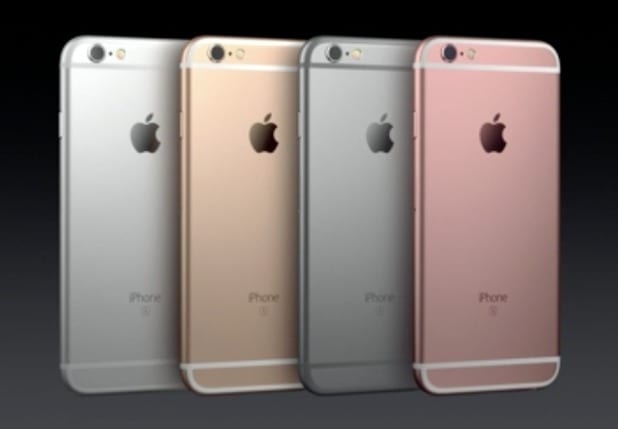
Both devices come in 16GB, 64GB and 128GB models. The weight of the iPhone 6s is 5.04 ounces (143 grams), up from 4.6 ounces (129 grams) just last year. The iPhone 6s Plus also gained a bit of weight, now tipping the scales at 6.77 ounces (192 grams) — that’s up from 6.1 ounces (172 grams) last year. The additional weight probably comes from the addition of the pressure sensors used behind the display for 3D Touch, as well as the Taptic Engine used to deliver haptic feedback.
It appears that adding the Taptic Engine also reduced the amount of volume available inside the iPhone 6s for battery. The iPhone 6 featured a 1810 mAh battery, while the iPhone 6s will only have a 1715 mAh battery. Improvements in the efficiency of the electronics used in the iPhone 6s/6s Plus should let the 6s still get the same battery life of the previous version. Since the iPhone 6s Plus will use those same electronics and is expected to have the same 2915 mAh battery as its predecessor, it may actually get better battery life than the iPhone 6 Plus.
A New Way To Buy An iPhone
One of the biggest announcements about the iPhone 6s and iPhone 6s Plus didn’t have to do with the phone itself, but how to purchase it. Apple has unveiled the iPhone Upgrade Program, in which a person can buy a new iPhone every twelve months for a set monthly fee that includes full AppleCare+ coverage as well. The pricing is actually quite good:
This has to drive US mobile carriers insane, as the monthly cost is much less than what any of them charge for a similar plan without AppleCare+. It also makes me personally wonder if this is the first step Apple is taking towards becoming an MVNO (Mobile Virtual Network Operator), in which you would purchase your cellular plan from the company and they’d actually just be buying bandwidth on everyone else’s infrastructure. Rumors to that effect were rampant a few months ago; Apple actually came out and said they were not becoming an MVNO. But now that they’re competing directly against carriers in leasing unlocked iPhones, what’s to say they won’t also compete against them by bundling in a voice/text/data plan? You can check my prediction next September when the iPhone 7 arrives on the scene.
Wrapping It Up
The iPhone 6s and iPhone 6s Plus are already available for pre-order in the US, and a good number of people will get their hands on the newest iPhones on September 25.
While the jury will be out until we’re all able to try out the many features of the iPhone 6s, it looks like the laundry list of improvements and totally new features available on the new phones will make them even more popular than last year’s model.
What do you think will be the biggest attraction for the iPhone 6s or iPhone 6s Plus? Is it the faster chips under the hood, 3D Touch, or the vastly improved cameras? Or do you think the iPhone 6s family is one to pass, with the inevitable iPhone 7 just a year away? Give us your feedback in the comments.

